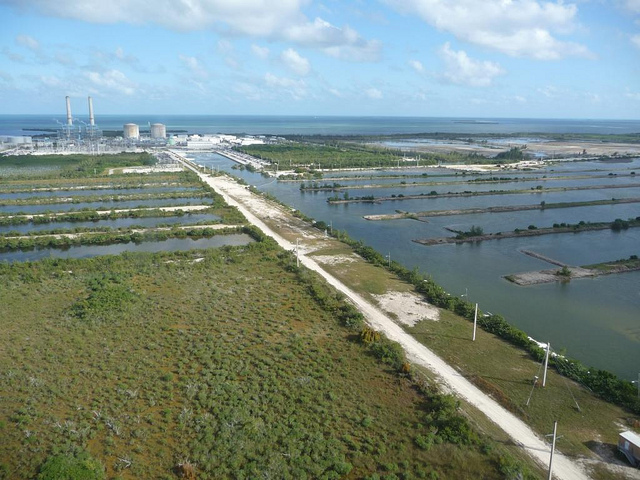
The Turkey Point nuclear power plant near Homestead. (Photo courtesy of the Dutch Diplomatic Network.)
By Ralph De La Cruz
Florida Center for Investigative Reporting
The updated hurricane forecast from those intrepid prognosticators at Colorado State University has historically been Florida’s version of “Gentlemen, start your engines.”
It signals that the summer storm season is almost upon us, and serves as a reminder to start getting our houses in hurricane order.
And after the recent events in Japan, certainly one of the items on our checklist should be examining how prepared our nuclear power plants are for a major storm. And again, as Japan has shown us, it’s not the obvious — in our case, winds –that we should be concerned about.
The three nuclear power plants in Florida (with five reactors) are all on, or near, the water. That’s because they require massive amounts of water to keep things cool.
The Turkey Point nuclear power plant near Homestead, in Miami-Dade County, is the epitome of a Florida nuclear plant. And a reminder of the challenges we face, particularly during hurricane season.
Years ago, as a reporter covering Homestead, I had the chance to tour the plant. I asked the expected questions about how it would withstand hurricane-force winds. And received the expected assurances.
A few months after I toured it, monstrous Hurricane Andrew made landfall within 10 miles of the plant. And as I had been assured, Turkey Point withstood the winds.
But as the double disaster in Japan has shown, I was asking the wrong questions. I should have been asking about tidal surge, backup electrical systems and the safety issues of having multiple reactors at one site.
Well, luckily for us, the people at the meterological website Climate Central are on the case. They recently released a fascinating report that focused on Turkey Point. And they not only asked the right questions, but went a bit further by considering: How would such system hold up in a world with rising sea levels?
Turns out that, in 1992, the tidal surge from Hurricane Andrew came within 4 feet of the reactor buildings — as plant owner Florida Power & Light Co. had anticipated.
But could we expect such a successful outcome in the future, with sea levels rising?
Since 1992, sea level — as a result of global warming and the loss of inland ice — has been rising at an accelerated rate.
In 2009, FPL applied for a a two-reactor expansion at Turkey Point. (At about the same time, Progress Energy also began plans to build a two-reactor plant in Levy County, on the Gulf coast.)
The Climate Central article pointed out that, as part of their application process, FPL estimated worst-case storm surge scenarios and predicted that a monster hurricane could bring a 24.8 foot surge. Which would be 1.2 feet below their new reactors.
All good.
But those figures are based on predictions that sea levels in Biscayne Bay could rise between .78 feet and one foot in the next century.
Only problem is, FPL used data collected between 1931 and 1981. And as the National Oceanic and Atmospheric Administration pointed out, sea level has been rising at an accelerated rate since 1981.
Climate Central reports that the Navy is preparing for a rise of 2.6 feet by 2100. And the Miami-Dade County Climate Change Advisory Task Force is asking the Nuclear Regulatory Commission — which is still reviewing FPL’s expansion request — to require FPL to use higher numbers for the rise in sea levels.
“In support of a petition against FPL’s proposal to build the two new reactors at Turkey Point,” Climate Central reported, “University of Miami geologist Harold Wanless has testified on behalf of the Miami-Dade CCATF that:
” ‘With what is happening in the Arctic and Greenland, many respected scientists now see a likely sea level rise of at least 1.5 feet in the coming 50 years and a total of at least three to five feet by the end of the century, possibly significantly more.’ ”
What’s not mentioned by Climate Central is the political climate in the country, in which tea party-led Republicans have turned their focus on deregulation, cutting oversight and the budgets of agencies such as NOAA. All of which further complicates matters for nuclear plants on the coast.
The Climate Central report is compelling and well worth the read.
